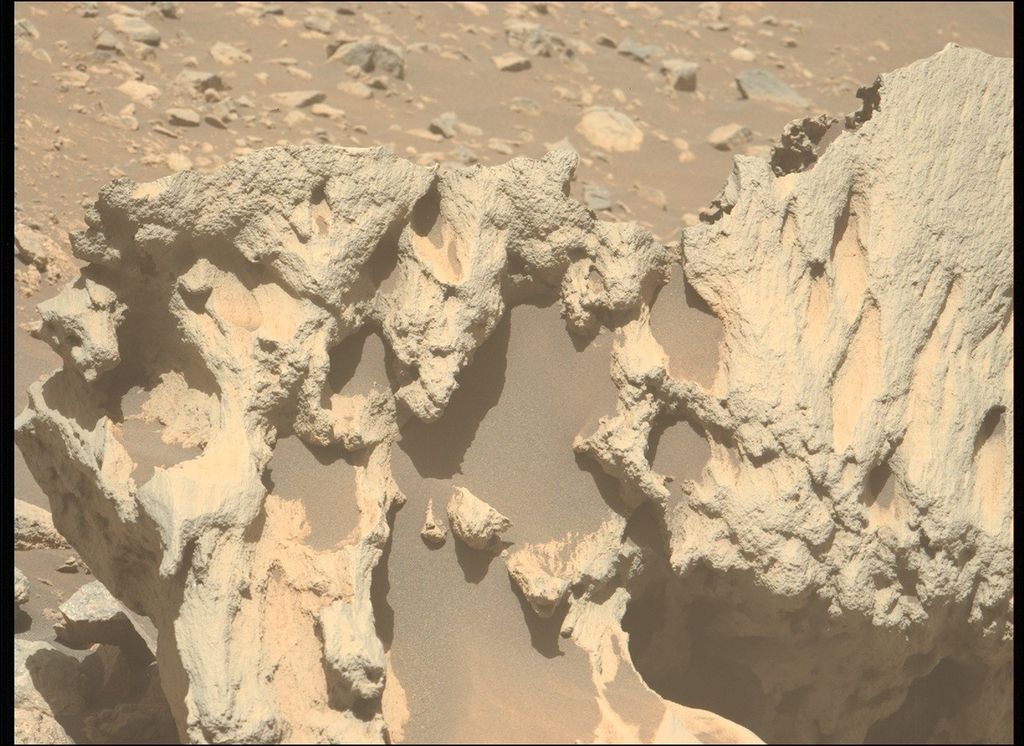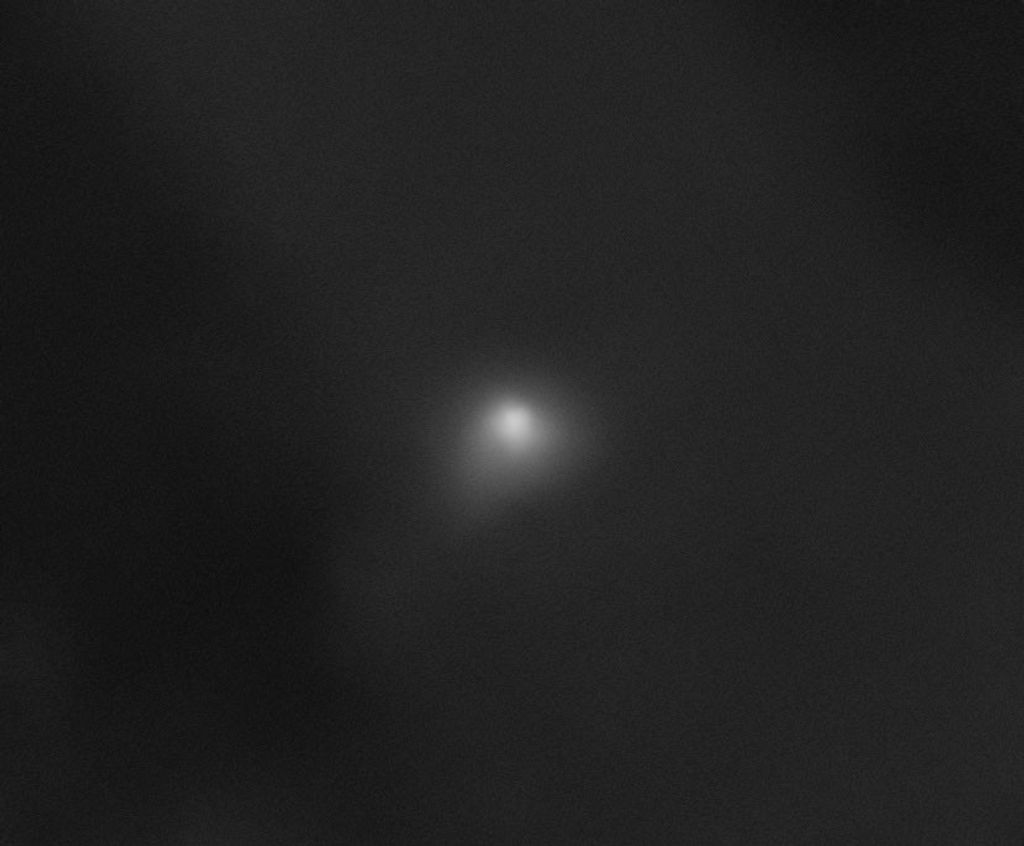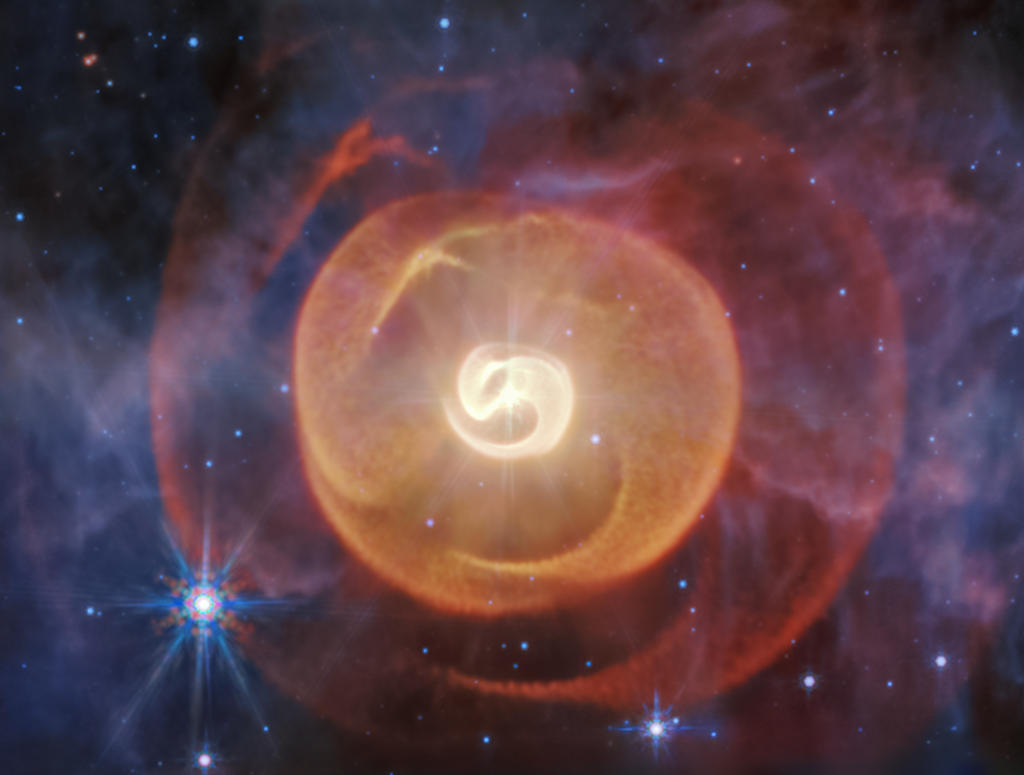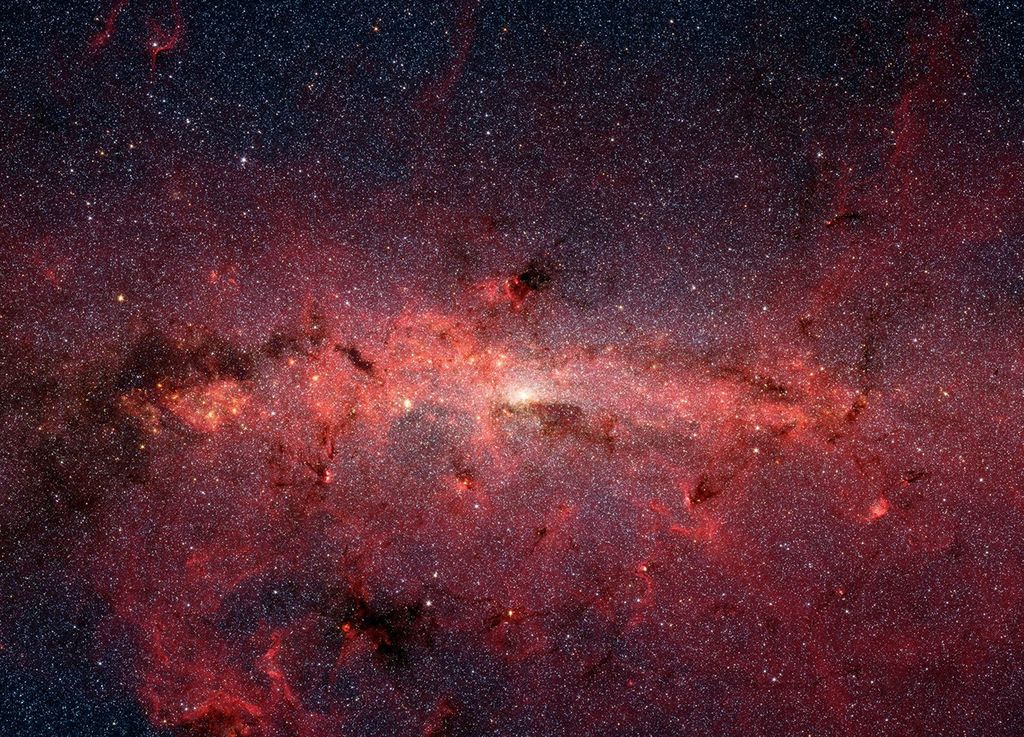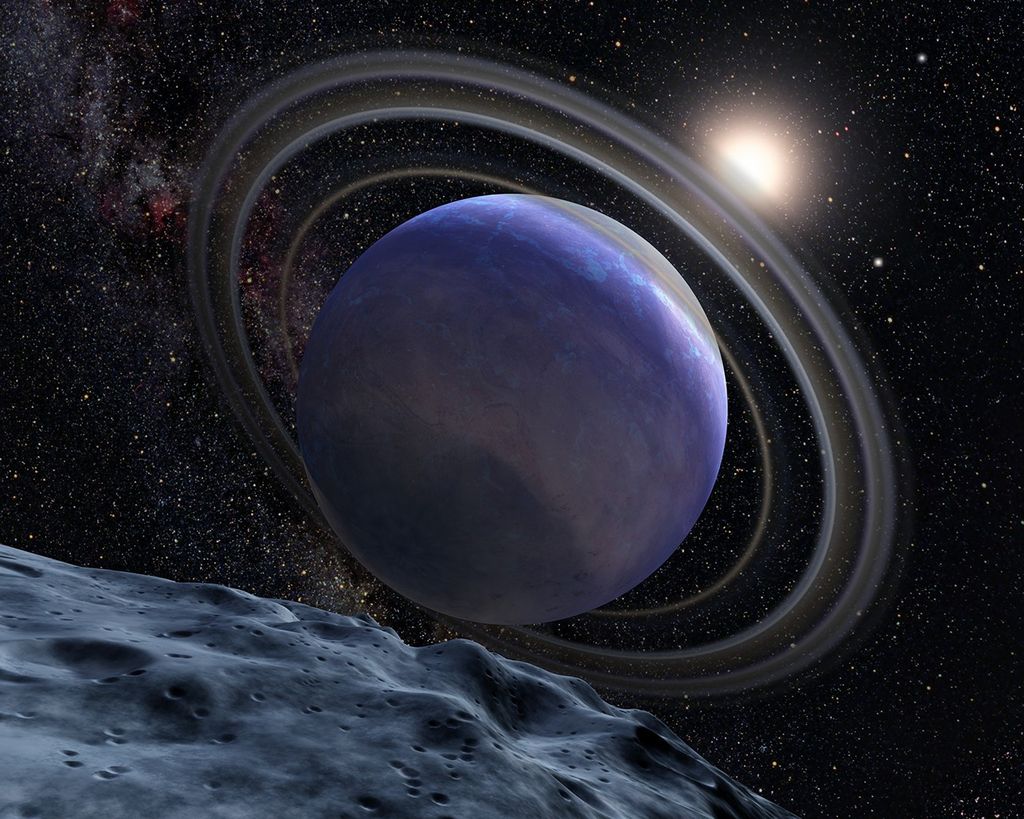1 min read
Wolf-Rayet Apep (MIRI Compass Image)
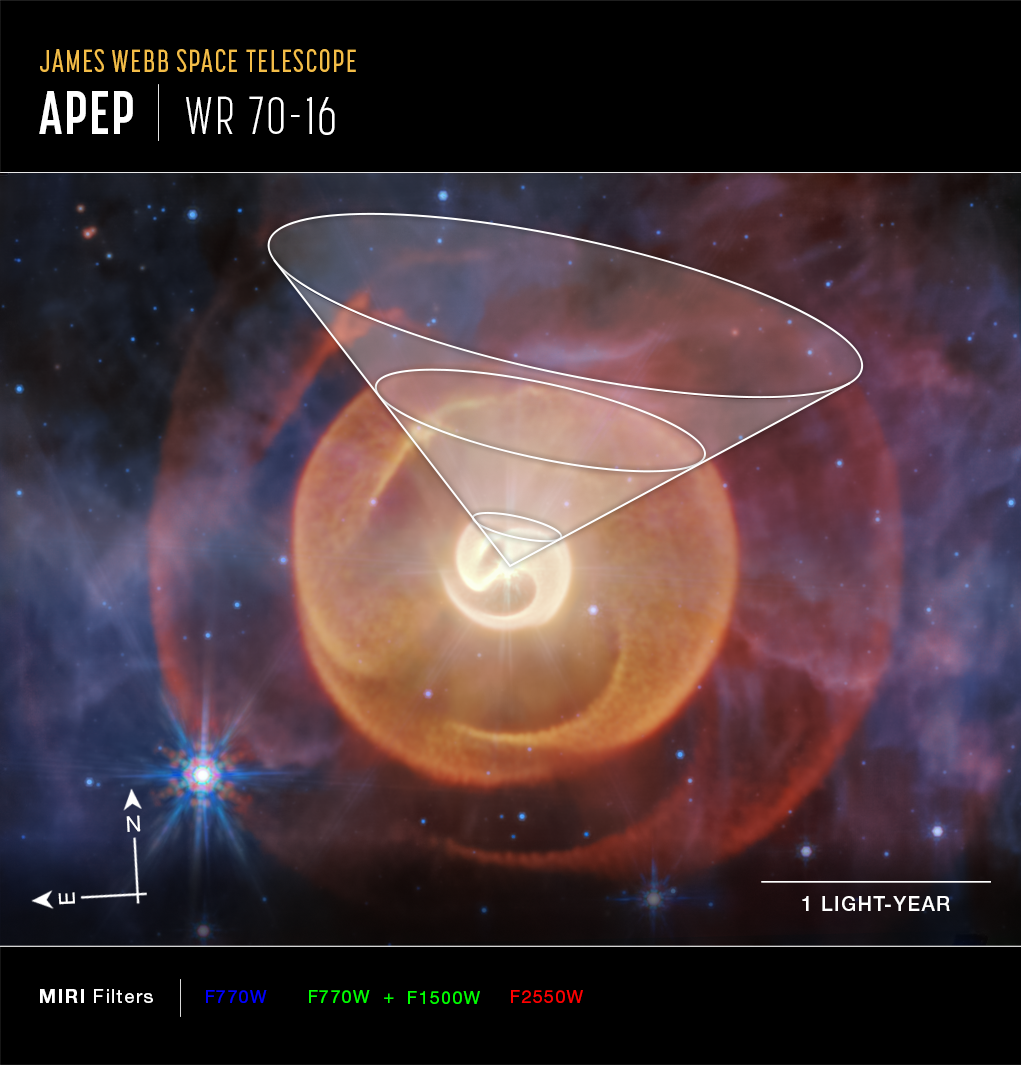
This image of the Wolf-Rayet binary Apep, captured by the James Webb Space Telescope’s MIRI (Mid-Infrared Instrument), shows compass arrows, scale bar, and color key for reference.
The overlay of a funnel shows where the third star in the system cut holes through the dust.
The north and east compass arrows show the orientation of the image on the sky. Note that the relationship between north and east on the sky (as seen from below) is flipped relative to direction arrows on a map of the ground (as seen from above).
The scale bar is labeled in light-years, which is the distance that light travels in one Earth-year. (It takes 1 year for light to travel a distance equal to the length of the scale bar.) One light-year is equal to about 5.88 trillion miles or 9.46 trillion kilometers.
This image shows invisible mid-infrared wavelengths of light that have been translated into visible-light colors. The color key shows which MIRI filters were used when collecting the light. The color of each filter name is the visible light color used to represent the infrared light that passes through that filter.
Read a full description of the image.
About the Object
- R.A. PositionR.A. PositionRight ascension – analogous to longitude – is one component of an object's position.16:00:50.5
- Dec. PositionDec. PositionDeclination – analogous to latitude – is one component of an object's position.-51:42:45.0
- ConstellationConstellationOne of 88 recognized regions of the celestial sphere in which the object appears.Norma
- DistanceDistanceThe physical distance from Earth to the astronomical object. Distances within our solar system are usually measured in Astronomical Units (AU). Distances between stars are usually measured in light-years. Interstellar distances can also be measured in parsecs.8,000 light-years
- DimensionsDimensionsThe physical size of the object or the apparent angle it subtends on the sky.Image is about 1.9 arcminutes across (4 light-years)
About the Data
- Data DescriptionData DescriptionProposal: A description of the observations, their scientific justification, and the links to the data available in the science archive.
Science Team: The astronomers who planned the observations and analyzed the data. "PI" refers to the Principal Investigator.This image was created with Webb data from proposal: 5842 (Y. Han). Image processing: Alyssa Pagan (STScI).
- InstrumentInstrumentThe science instrument used to produce the data.MIRI
- Exposure DatesExposure DatesThe date(s) that the telescope made its observations and the total exposure time.24 July 2024
- FiltersFiltersThe camera filters that were used in the science observations.F770W, F1500W, F2550W
- Object NameObject NameA name or catalog number that astronomers use to identify an astronomical object.Apep, 2XMM J160050.7–514245
- Object DescriptionObject DescriptionThe type of astronomical object.Wolf-Rayet Binary
- Release DateNovember 19, 2025
- Science ReleaseWebb First to Show 4 Dust Shells ‘Spiraling’ Apep, Limits Long Orbit
- CreditImage: NASA, ESA, CSA, STScI; Science: Yinuo Han (Caltech), Ryan White (Macquarie University); Image Processing: Alyssa Pagan (STScI)

This image is a composite of separate exposures acquired by the James Webb Space Telescope using the MIRI instrument. Several filters were used to sample wide wavelength ranges. The color results from assigning different hues (colors) to each monochromatic (grayscale) image associated with an individual filter. In this case, the assigned colors are: Blue: F770W, Green: F770W+F1500W, Red: F2550W
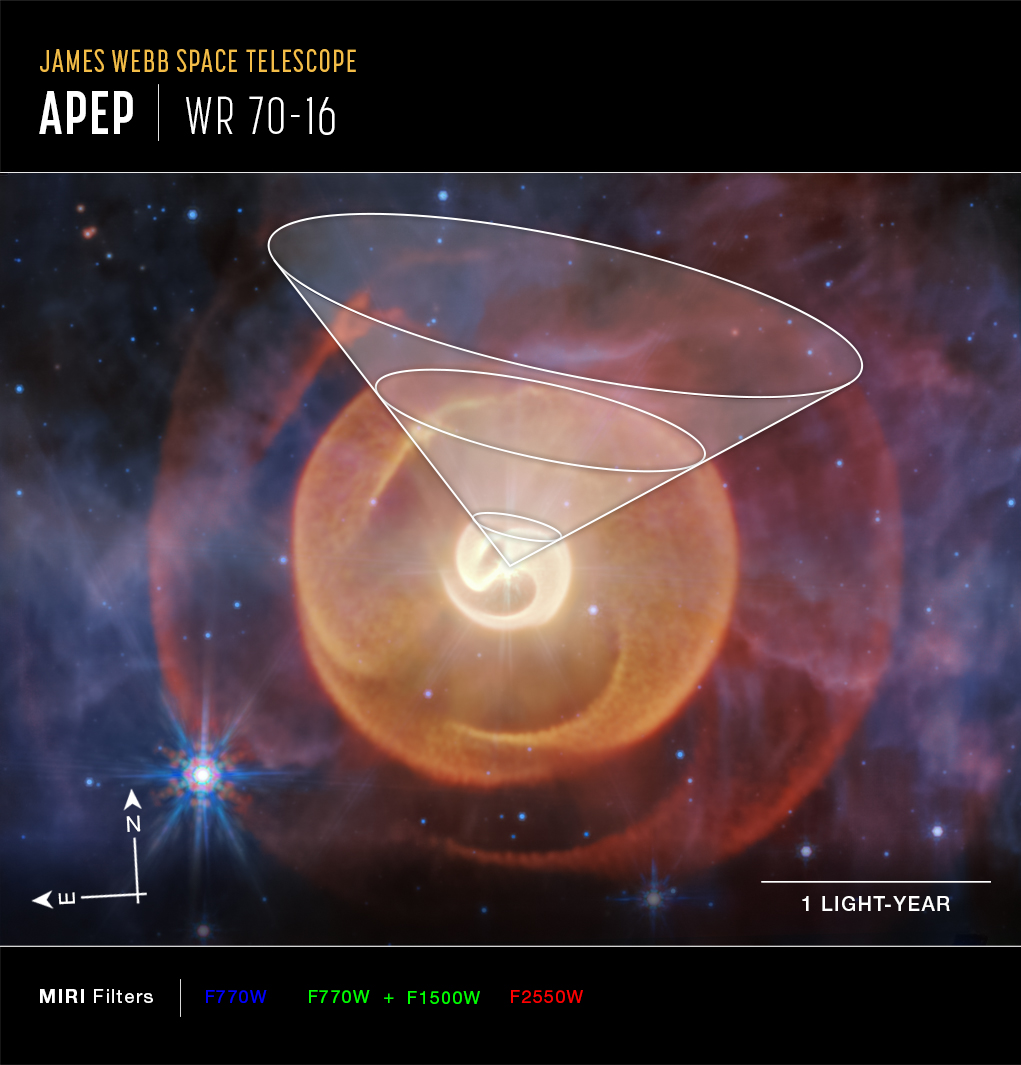
Related Images & Videos

Wolf-Rayet Apep (MIRI Image)
Webb’s mid-infrared image shows four coiled shells of dust around a pair of Wolf-Rayet stars known as Apep for the first time. Previous observations by other telescopes showed only one. Webb’s data also confirmed that there are three stars gravitationally bound to one another.

Wolf-Rayet Apep Visualization
This scientific visualization models what three of the four dust shells sent out by two Wolf-Rayet stars in the Apep system look like in 3D based on mid-infrared observations from NASA’s James Webb Space Telescope. Apep is made up of two Wolf-Rayet binary stars that are orb...
Share
Details
Laura Betz
NASA’s Goddard Space Flight Center
Greenbelt, Maryland
laura.e.betz@nasa.gov




